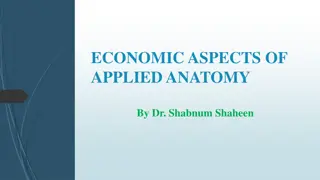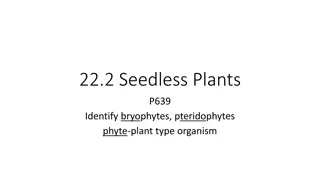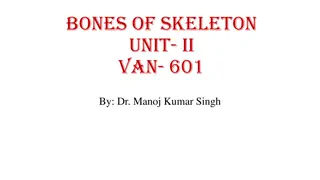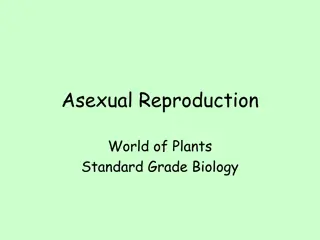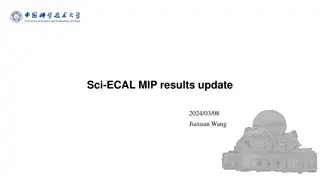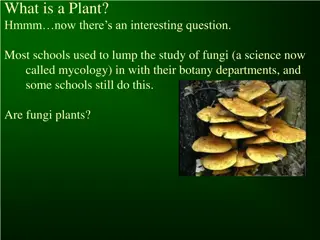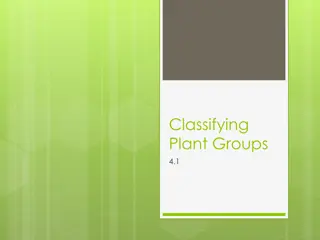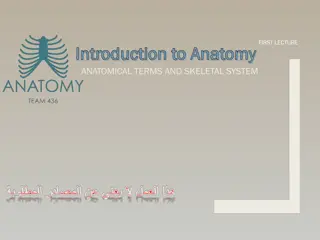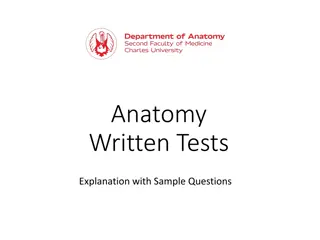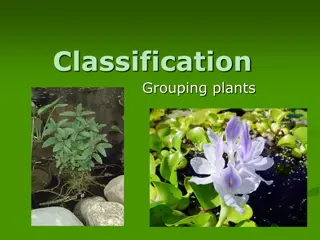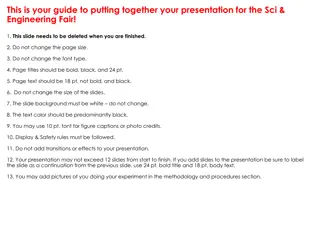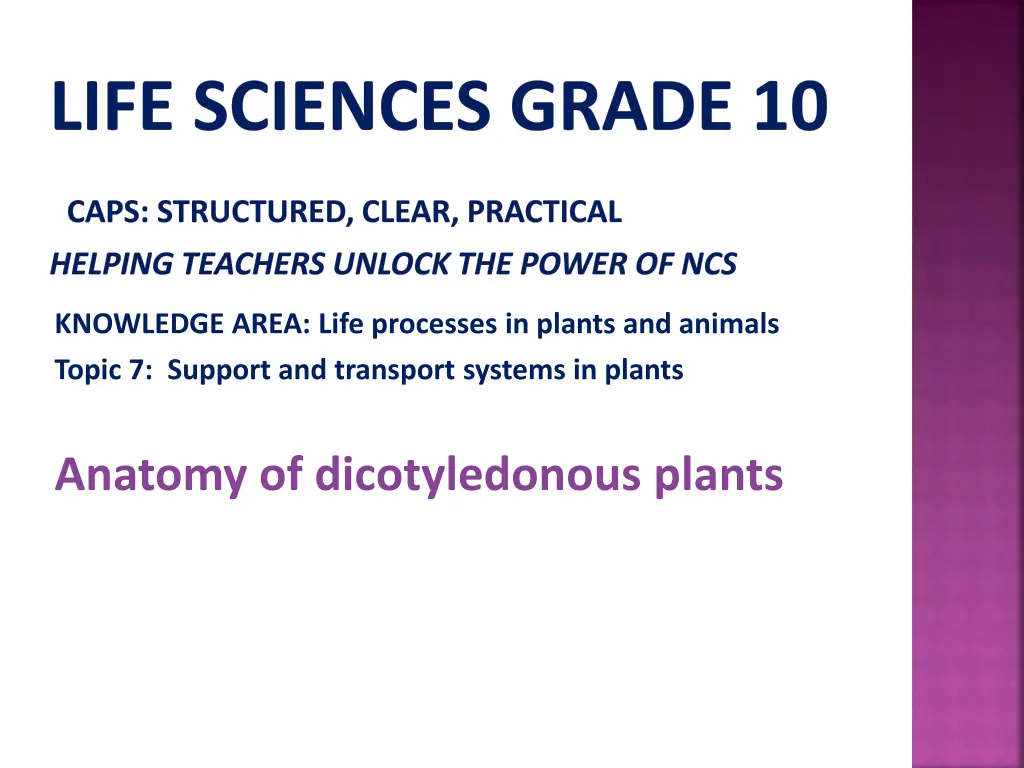
Plant Transport Systems and Support Anatomy
Learn about the importance of transport systems in plants, explore the anatomy of dicotyledonous plants focusing on the root and stem tissues, and understand the need for support structures to facilitate growth and photosynthesis.
Download Presentation

Please find below an Image/Link to download the presentation.
The content on the website is provided AS IS for your information and personal use only. It may not be sold, licensed, or shared on other websites without obtaining consent from the author. If you encounter any issues during the download, it is possible that the publisher has removed the file from their server.
You are allowed to download the files provided on this website for personal or commercial use, subject to the condition that they are used lawfully. All files are the property of their respective owners.
The content on the website is provided AS IS for your information and personal use only. It may not be sold, licensed, or shared on other websites without obtaining consent from the author.
E N D
Presentation Transcript
LIFE SCIENCES GRADE 10 CAPS: STRUCTURED, CLEAR, PRACTICAL HELPING TEACHERS UNLOCK THE POWER OF NCS KNOWLEDGE AREA: Life processes in plants and animals Topic 7: Support and transport systems in plants Anatomy of dicotyledonous plants
CAPS SPECIFIC AIMS 1. Knowing Life Sciences 2. Investigating Phenomena in Life Sciences 3. Appreciating and Understanding the History, Importance and Applications of Life Sciences in Society
SPECIFIC SKILLS Apply knowledge in new contexts Access information Select key ideas Use knowledge in a new way Recall information Analyse information/data Describe knowledge of NS Critically evaluate scientific information Build a conceptual framework Organise or reorganise knowledge Recognise relationships between existing knowledge and new ideas Write summaries Develop flow charts and mind maps Identify assumptions Categorise information Recognise patterns and trends
SUMMARY OF PRESENTATION Need for support and transport in plants Anatomy of Dicot Plants The Root The Stem Tissues Responsible for Transport and Support
THE NEED FOR TRANSPORT AND SUPPORT We shall look at two reasons for the need of a transport system in plants. In order for photosynthesis to occur the plant requires water, sunlight and carbon dioxide. Sunlight and gases enters the plant directly at the leaf where photosynthesis occurs. But water is absorbed by the roots, a transport system must be present to carry the water from the roots to all parts of the plant. Once the food is manufactured it must be transported to all parts of the plant from the leaves, a transport system is needed for this.
THE NEED FOR TRANSPORT AND SUPPORT Most plants need to grow tall in order for the to reach the sunlight. If these plants do not have any supporting tissue they cannot be held upright. Therefore they need supporting tissue to hold the plant upright so that they can reach great heights in order to reach sunlight.
ANATOMY OF DICOTYLEDONOUS PLANTS THE ROOT The root is an example of a plant organ. The are two types of root systems. These are the: tap root system and the adventitious root system. We shall look at the main differences between these two root systems 1. 2.
ANATOMY OF DICOTYLEDONOUS PLANTS THE ROOT THE TAP ROOT: The tap root tap root has one main root and other smaller roots arising from it. The main root is called the tap root. The smaller roots that arise from it are called lateral or side roots. The tap root arises from the radicle of the embryo found in a seed. The radicle is the first root. The diagram of the next slide shows us an embryo with the radicle.
ANATOMY OF DICOTYLEDONOUS PLANTS THE ROOT
ANATOMY OF DICOTYLEDONOUS PLANTS THE ROOT ADVENTITIOUS ROOT: The adventitious root adventitious root has no distinguishable main root all the roots are more or less the same size. These roots do not arise from the radicle. They arise from any other part of the plant.
SOMETHING FOR YOU TO DO Name the two types of roots systems you have studied and tabulate two differences between them.
SOLUTION Tap root system and adventitious root system. The differences between tap root system and adventitious root system Tap root system Arises from the radicle of embryo. Adventitious root system Does not arise from the radicle of embryo, it arises from any other part of the plant. The main root cannot be distinguished. Has one main from which the lateral roots arise.
ANATOMY OF DICOTYLEDONOUS PLANTS THE ROOT FUNCTIONS OF ROOTS: Roots have two main functions. These are: They absorb water and mineral salts. They anchor the plant firmly to the ground. 1. 2.
ANATOMY OF DICOTYLEDONOUS PLANTS THE ROOT EXTERNAL STRUCTURE OF THE ROOT TIP: The root tip has 5 main regions as shown in the diagram alongside. These are: Root cap Growing point Region of elongation Region of root hairs Mature region 1. 2. 3. 4. 5.
ANATOMY OF DICOTYLEDONOUS PLANTS THE ROOT THE ROOT CAP: The root cap covers the root tip. It is made up of parenchyma cells. Some of these cells are rubbed off and damaged as the root tip pushes its way through the soil. FUNCTION: The root tip protects the inner layers of the root tip.
ANATOMY OF DICOTYLEDONOUS PLANTS THE ROOT GROWING POINT: This region is found within the root cap. It is made up of meristematic cells. Do you remember what are Do you remember what are meristematic cells? meristematic cells? This region produces new cells. FUNCTION: These cells are used to 1. Replace the cells that are damaged or lost by the root cap.
ANATOMY OF DICOTYLEDONOUS PLANTS THE ROOT Some cells are pushed to the region of elongation. 2. REGION OF ELONGATION: This region occurs above the growing point. These cells come from the growing point. FUNCTION: 1. Cells in this region elongate.
ANATOMY OF DICOTYLEDONOUS PLANTS THE ROOT ROOT HAIR REGION: Found above the region of elongation. It has the root hairs externally. Internally the cells in this region start to differentiate. They start to become mature tissue. Sometimes it is also called the region of elongation. Do you remember what Do you remember what differentiate means? differentiate means? FUNCTION: The root hairs absorb water and mineral salts. 1.
ANATOMY OF DICOTYLEDONOUS PLANTS THE ROOT THE MATURE REGION: This is the last region of the root tip. Externally it has lateral or side roots. Internally it has fully differentiated tissue. Name some examples of these Name some examples of these fully differentiated tissue? fully differentiated tissue?
SOLUTION: Meristematic cells are cells that divide continuously and can become differentiated into any type of tissue. Differentiated is when the structure of the cell changes so that it can perform a different function. Some examples of differentiated tissues are parenchyma, sclerenchyma, collenchyma, xylem and phloem.
ANATOMY OF DICOTYLEDONOUS PLANTS THE ROOT INTERNAL STRUCTURE OF YOUNG DICOT ROOT: We will study the cross section of the young dicot root. Cross section is also called a transverse section. Transverse section can be also represented by the letters t/s. The next slide shows a plan diagram of the t/s of young dicot root.
ANATOMY OF DICOTYLEDONOUS PLANTS THE ROOT
ANATOMY OF DICOTYLEDONOUS PLANTS THE ROOT From the plan diagram we can see that the root is made up of 3 main regions. These 3 regions are the Epidermis Cortex Stele The next shows a detailed diagram. This shows the detail of each region which we shall now discuss. 1. 2. 3.
ANATOMY OF DICOTYLEDONOUS PLANTS THE ROOT
ANATOMY OF DICOTYLEDONOUS PLANTS THE ROOT EPIDERMIS: The epidermis forms the outermost layer of the root. The epidermis is a single layer of cells. These cells are brick shaped, thin walled and transparent. Amongst the epidermal cells are specialized epidermal cells called root hairs. FUNCTION: The epidermis allows sunlight to pass through to the deeper lying tissues. 1.
ANATOMY OF DICOTYLEDONOUS PLANTS THE ROOT Since the epidermis is the outermost layer it provides the inner tissues of the root with protection. The root hair is used to absorb water and mineral salts. 2. 3.
ANATOMY OF DICOTYLEDONOUS PLANTS THE ROOT THE ROOT HAIR: The root is made up of elongated cells. The cell wall is extremely thin. In fact it is so thin that in places there are pores so it makes direct contact with the soil. Within the cell wall there is a cell membrane. The cell membrane surrounds the cytoplasm. Embedded in the cytoplasm is a very large vacuole and a nucleus.
ANATOMY OF DICOTYLEDONOUS PLANTS THE ROOT Look at the diagram of the root hair below.
ANATOMY OF DICOTYLEDONOUS PLANTS THE ROOT CORTEX: The cortex lies within the epidermis. It is made up of many layers of parenchyma cells. The cortex ends in a single layer of cells called the endodermis. The endodermis is thickened by a substance called suberin. This suberin is laid down on the inner and radial walls. Since the endodermis is thickened by suberin we say that the endodermis is suberised.
ANATOMY OF DICOTYLEDONOUS PLANTS THE ROOT The strip of suberin is called the Casparian strip. The Casparian strip is waterproof. Between the thickened endodermal cells there are unthickened cells. These unthickened cells are called passage cells. These passage cells are found opposite the xylem arms of the stele. These cells will allow water to pass through.
ANATOMY OF DICOTYLEDONOUS PLANTS THE ROOT FUNCTION: With the passage cells the endodermis directs the movement of water through the root into the xylem. 1. STELE: The stele is also known as the vascular cylinder. It is made up of 4 different types of tissue. These are the pericycle, xylem, cambium and phloem.
ANATOMY OF DICOTYLEDONOUS PLANTS THE ROOT The pericycle is found immediately below the endodermis. It is made up of thin walled cells. The xylem is found at the center of the stele. The xylem has a number of arms radiating outwards. This gives the xylem its star shaped or cross appearance. The phloem is found in the arms of the xylem.
ANATOMY OF DICOTYLEDONOUS PLANTS THE ROOT The vascular cambium is found between the xylem and phloem. FUNCTIONS: The pericycle gives rise to lateral roots. The xylem transports water and mineral salts from the roots to all parts of the plant. The phloem transports manufactured food from the leaves to all parts of the plant. The vascular cambium gives rise to more xylem and phloem as the root increases in thickness. 1. 2. 3. 4.
ANATOMY OF DICOTYLEDONOUS PLANTS THE ROOT DISTINGUISHING FEATURES OF A ROOT: These features will help you tell the difference between the root and stem and will also help you to identify the root. The presence of root hairs. A clearly defined endodermis. The presence of a central stele. The star shaped xylem. Xylem alternates with the phloem. 1. 2. 3. 4. 5.
SOMETHING FOR YOU TO DO Study the diagram and answer the questions that follow: 1. Identify the organ shown. 2. Give 3 visible reasons for your answer above. 3. Provide labels for B and C. 4. Identify cell A. Explain how it is adapted for its function. 5. Label D is the xylem. Give 1 visible reason for your answer. Bc A D
SOLUTION Root. Presence of a well defined endodermis. Star shaped xylem. Xylem alternates with the phloem. Presence of a central stele. B- cambium C-phloem A- passage cell. It is unthickened and occurs in line with arms of the xylem to allow for easy entry of water into xylem. It is round in cross section. 1. 2. 3. 4. 5.
ANATOMY OF DICOTYLEDONOUS PLANTS THE STEM EXTERNAL STRUCTURE: Stems are found above the ground. They are cylindrical and erect. Stem are green in colour when young due to the presence of chloroplasts. Leaves and buds arise from the stem. The part of the stem from which the leaf arises is called the node. The part between 2 nodes is called the internode.
ANATOMY OF DICOTYLEDONOUS PLANTS THE STEM The stem has two types of buds. These are the terminal bud and the axillary bud. The terminal bud is also called the apical bud. The terminal bud is found at the tips of stems. The axillary bud is found in the axil. The axil is the area between the leaf and the stem.
ANATOMY OF DICOTYLEDONOUS PLANTS THE STEM INTERNAL STRUCTURE OF YOUNG DICOT STEM: We shall look at the cross section of a young dicot stem. Look at the next 2 slides that show plan and detailed diagram of the young dicot stem.
ANATOMY OF DICOTYLEDONOUS PLANTS THE STEM The plan diagram of the dicot stem. The diagram shows us that the stem is made up of 4 regions. These are the: Epidermis Cortex Vascular bundles Pith We shall now look at each of these 4 regions in detail. 1. 2. 3. 4.
ANATOMY OF DICOTYLEDONOUS PLANTS THE STEM
ANATOMY OF DICOTYLEDONOUS PLANTS THE STEM EPIDERMIS: The epidermis is covered by a transparent cuticle. It is made up of single layer of cells. These cells are transparent, thin walled cells. Specialized epidermal cells called guard cells maybe found amongst the epidermal cells. These guard cells have the same structure discussed earlier in the leaf.
ANATOMY OF DICOTYLEDONOUS PLANTS THE STEM FUNCTION: The transparent cuticle allows for sunlight to pass through The cuticle also reduces water loss by transpiration. As the outermost layer the epidermis protects the inner lying tissue. The guard cells allow for gaseous exchange. 1. 2. 2. 3.
ANATOMY OF DICOTYLEDONOUS PLANTS THE STEM CORTEX: The cortex is found within the epidermis. Sometimes immediately below the epidermis there are layers of collenchyma or sclerenchyma. These layers make up the hypodermis. The micrographs below show the 3 types of tissue found in the cortex.
ANATOMY OF DICOTYLEDONOUS PLANTS THE STEM Form the diagram you can see the sclerencyhma cells are evenly thickened, while the collenchyma is thickened only in the corners. Sclerenchyma tissue is made up of sclerenchyma fibers and stone cells. The fibers have tapered ends.
ANATOMY OF DICOTYLEDONOUS PLANTS THE STEM The sclerenchyma of the hypodermis is made up of sclerenchyma fibers only. Below the hypodermis is the parenchyma. The parenchyma is made up of thin-walled irregularly shaped cells, with large intercellular spaces. The final layer of the cortex is the endodermis. The endodermis forms a single layer. The endodermis of the stem is not clearly visible.
ANATOMY OF DICOTYLEDONOUS PLANTS THE STEM FUNCTION: The hypodermis strengthens the stem and helps to keep it upright. The parenchyma stores food. The intercellular airspaces of the parenchyma are used for the transport of water and gases. The endodermal cells store starch. 1. 2. 3. 4.
ANATOMY OF DICOTYLEDONOUS PLANTS THE STEM VASCULAR BUNDLES: The vascular bundles have a circular arrangement around the pith. Each vascular bundle has the following structure. It has a sclerenchyma cap made up of sclerenchyma fibers right on the outside. The phloem tissue is found below the sclerenchyma cap. This is followed by the vascular cambium. Then immediately below the cambium is the xylem.
ANATOMY OF DICOTYLEDONOUS PLANTS THE STEM FUNCTION: The sclerenchyma fibers provides the plant with strength and helps to keep it upright. The xylem transports water and mineral salts from roots to all parts of the plant. The phloem transports manufactured food from the leaves to all parts of the plants. 1. 2. 3.
THE TISSUE RESPONSIBLE FOR TRANSPORT AND SUPPORT The tissues that are responsible for transport and support are xylem, phloem, sclerenchyma and collenchyma. All these tissues have been discussed earlier, but there a little new information to consider. The tissues responsible for transport are xylem and phloem.


